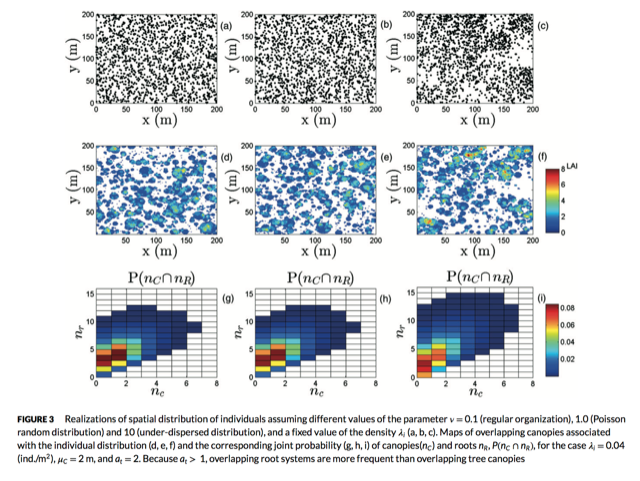An ecohydrological framework to explain shifts in vegetation organization across climatological gradients

Manfreda, S., Caylor, K.K., Good, S.P. (2017) “An ecohydrological framework to explain shifts in vegetation organization across climatological gradients”, Ecohydrology, doi:10.1002/eco.1809.
Abstract: Spatial patterns found in vegetated ecosystems exhibit different degrees of organization in stand density that can be interpreted as an indicator of ecosystem health. In semiarid environments, it is possible to observe transitions from over-dispersed individuals (e.g., an ordered lattice) to under-dispersed individuals (e.g., clumped points). These configurations correspond to different strategies of adaptation or optimization, whose understanding may help to predict some of the consequences of environmental changes for both ecosystem services and water resources. For this reason, we have developed a theoretical framework that characterizes the dispersion of individuals through a generalized double Poisson distribution and estimates the landscape-wide statistics using a soil moisture model accounting for tree canopies and root systems overlapping. Considering both the shading effect (light interception) of the canopies and the partitioning of water fluxes due to the presence of multiple individual root systems in one point, the optimum spacing between individuals at a given stand density is determined. This framework allows identifying the climatic boundaries for different landscape patterns in terms of optimal water use and stress. This simple scheme explains well the observed patterns of vegetation in arid and semiarid ecosystems.
